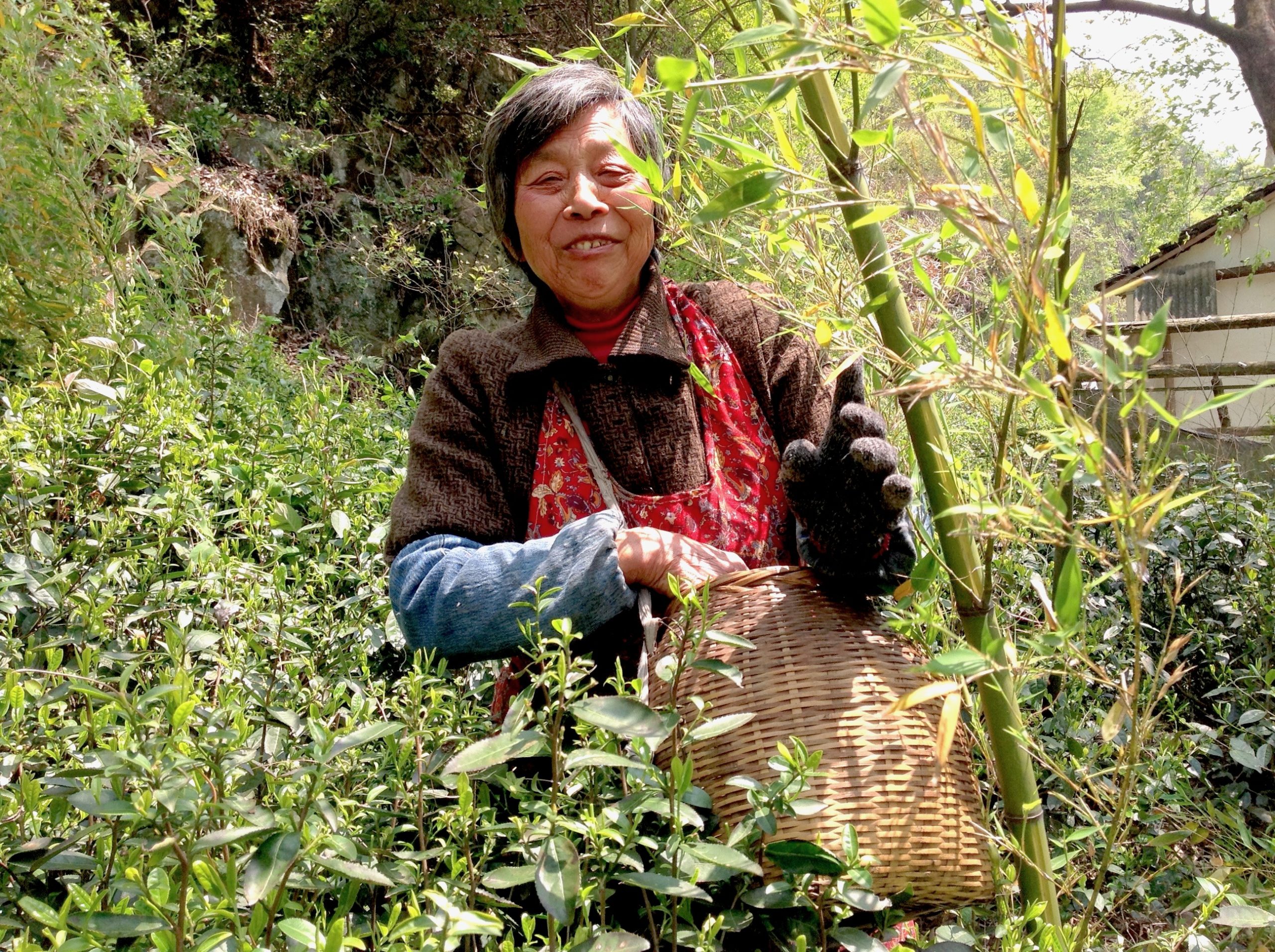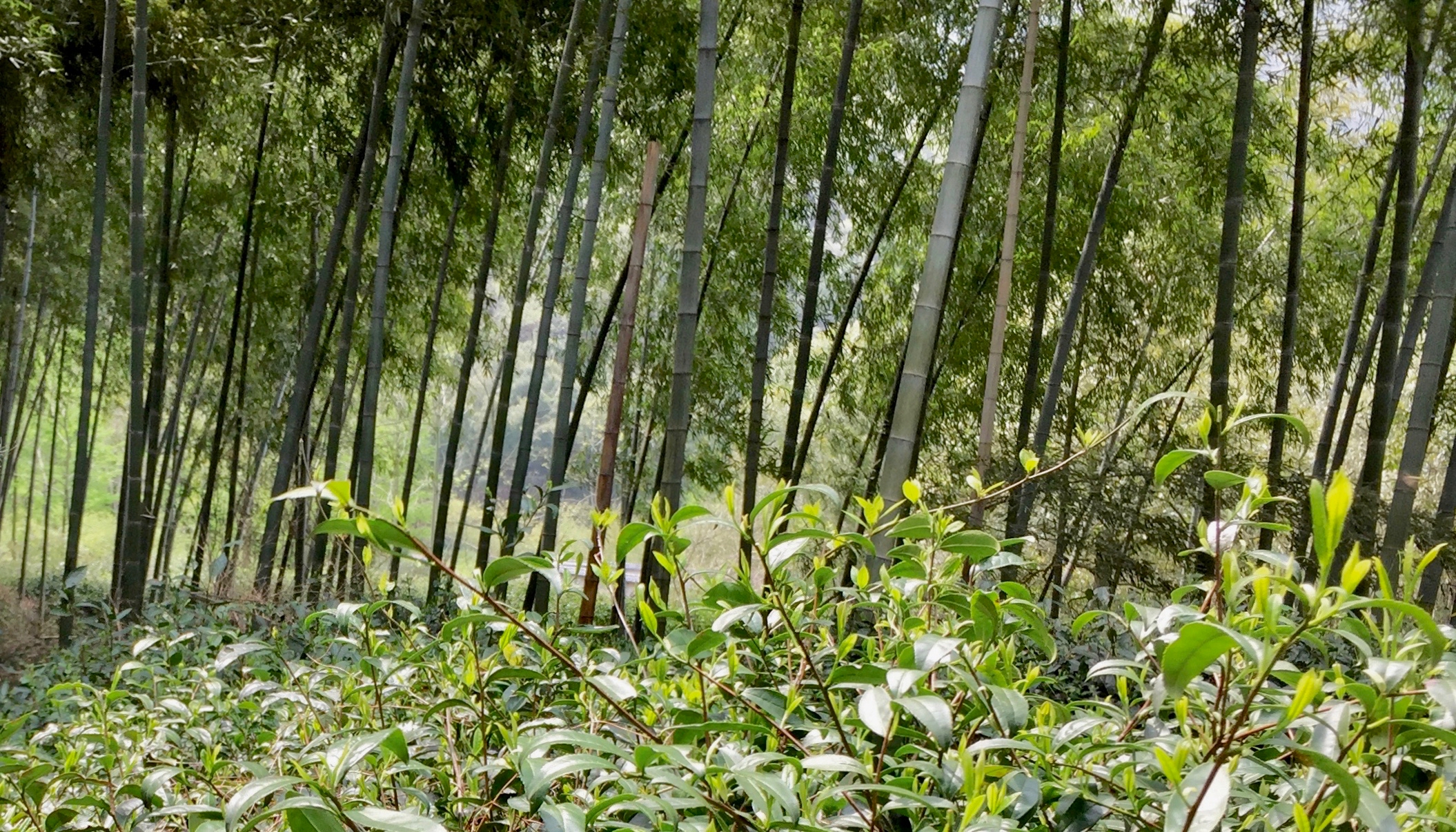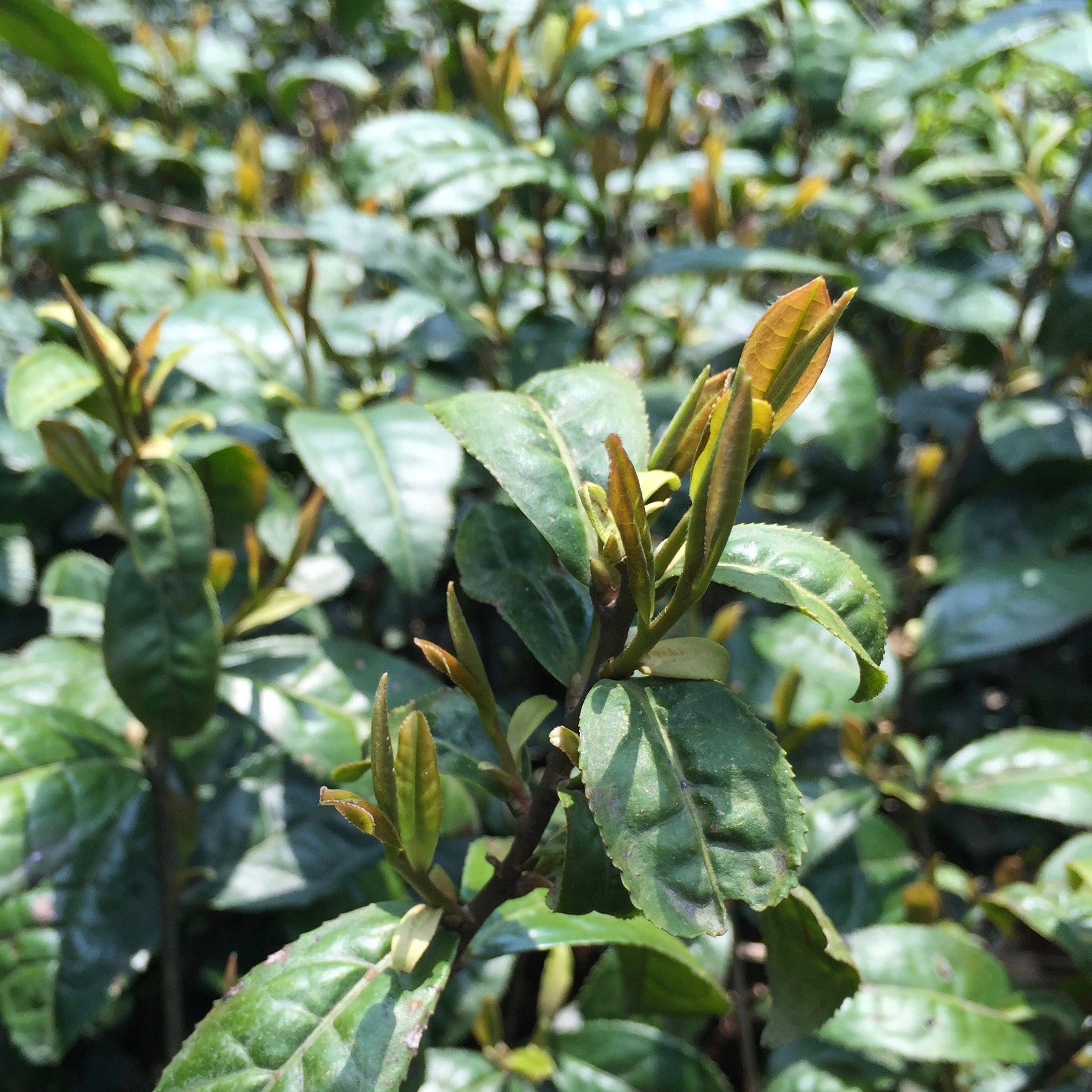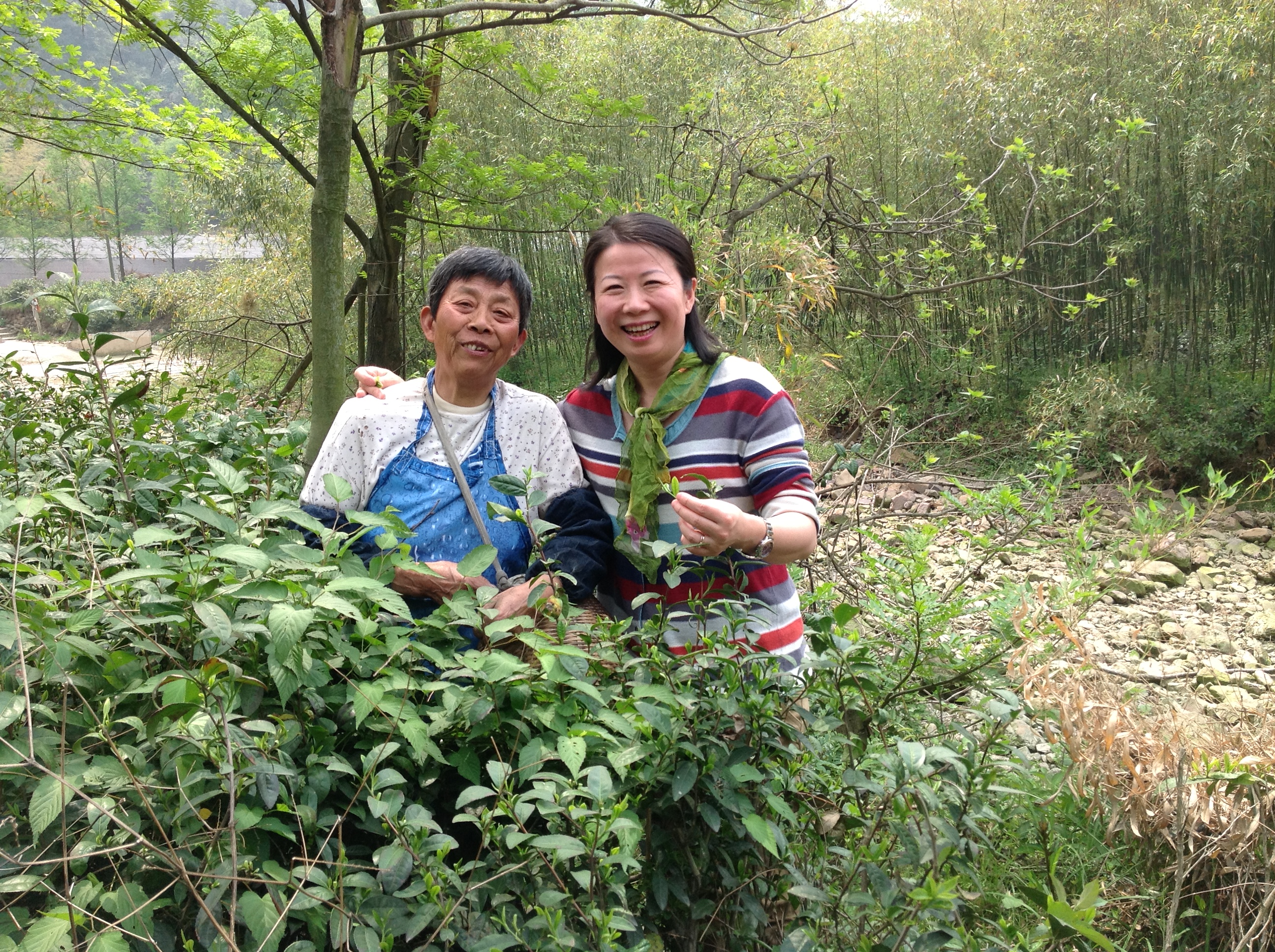
Chief tea maker and great grandmother, Ms. Pei Hongfeng, owns one of the most beautiful and unusual tea gardens we’ve ever seen: A scant 1.6-acre grove of old seed tea bushes, growing under the sun-dappled canopy of a bamboo forest. This is deep countryside tea. It’s a different universe from large-scale commercial tea production.
Her Guzhu Zisun (Purple Bamboo Shoot) is not the type of tea that’s produced with export in mind. It’s made to suit the taste of the neighborhood or those lucky enough to be passing through. Bushes are untended. They share soil, sunshine, and water with the thick grove of bamboo and underbrush. There’s no interest in optimizing for high-yield here. No new cultivars or cutting edge agriculture. It’s just tea, rampant and pristine as it comes. Ms. Pei harvests her bushes once a year, organizing her family and neighbors to pluck only as much tea as she needs to fill out modest orders and enough extra to share with the guests at her house-turned-mountain-inn.

A tea this small-scale does not have the handsome uniformity of, say, Anji Baicha. Rather, the shape and color of Ms. Pei’s tea’s gnarly leaves speak of their origin beyond the hedge. Leaves are full of dark and light greens from the genetic variety of their old heirloom seed-grown bushes. This is preindustrial tea, one purely the product of the skilled people and nativized tea bushes of the Guzhu.
Guzhu, of course, is a tea origin that goes way back. Purple Bamboo Shoot itself has been renowned since the Tang Dynasty, when it became one of the earliest recorded teas delivered to the imperial court as an annual tribute. While a lot has changed about tea in the 1,200 years since Lu Yu first wrote about Guzhu tea in his Classic of Tea, there’s no question that the old spirit of this historic tea is preserved in Ms. Pei’s skill and tea bushes.

Like many countryside women, Pei Hongfeng’s career has been largely influenced by her husband’s family trade, living with them on the edge of Changxing County in Zhejiang, where the main agricultural crops grown are bamboo and tea. She began her tea career at around 20 years old, learning the techniques for plucking fresh tea leaves by hand and how to cultivate the local variety of tea plant from seed in the bamboo forest where the tea garden grows. Later on, she learned how to maintain the fire to heat the wok while her husband fried the tea. Eventually, she also learned the techniques for frying, roasting, and all other steps of producing green tea over the decades. As of 2019, she has been in the tea trade for over 50 years.
Even after Pei Hongfeng’s husband’s passing, she has become highly respected as a master tea maker in her own right, as well as a local community leader. Every spring, she helps support her community by hiring local women who cannot travel far for extra jobs or income to harvest the tea. Some of them, like her 80-year-old next-door neighbor, return to help every year. Pei Hongfeng is now teaching her tea expertise to her daughter-in-law and grandson.

